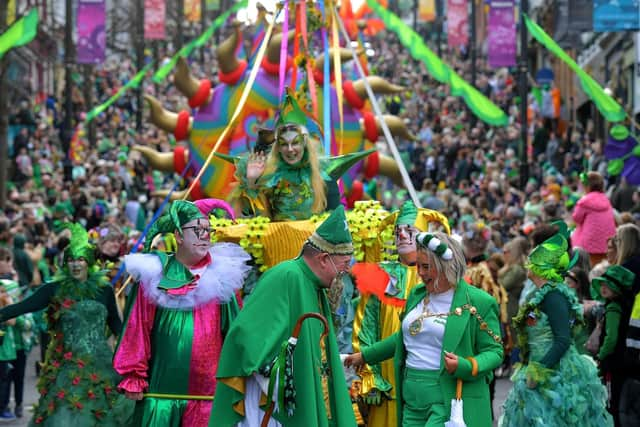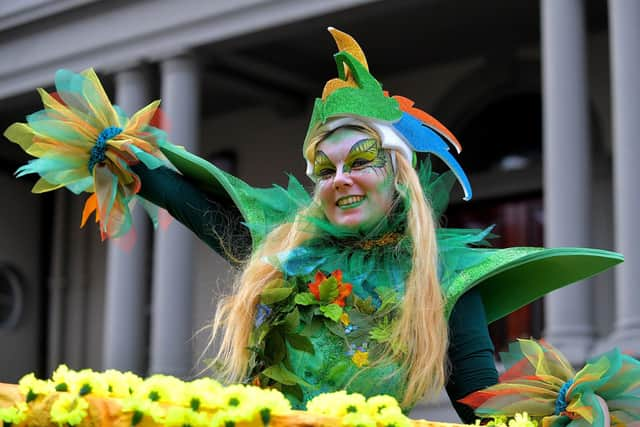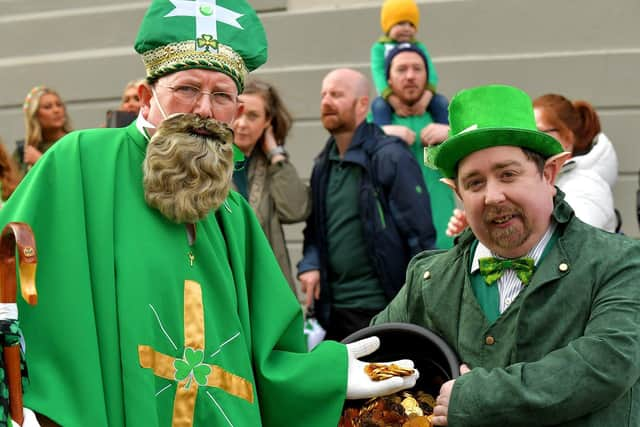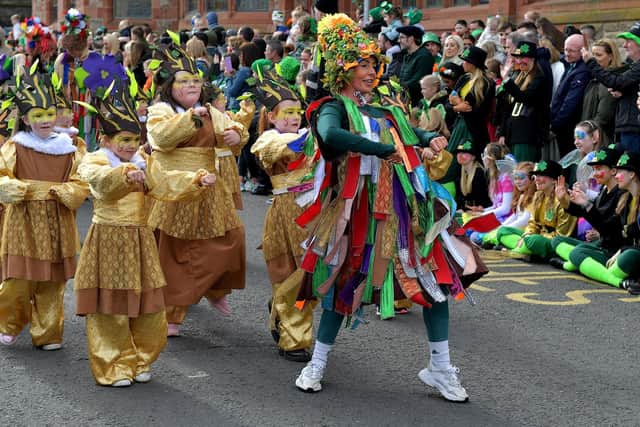St. Patrick and his reputed connections to Derry and Donegal
and live on Freeview channel 276
Ciarán J. Devlin, in his comprehensive history, ‘The Making of Medieval Derry’ notes how, in the days before dioceses, Armagh, the centre of devotion to St. Patrick in Ireland at that time and yet today, laid claim to ‘seven churches near the River Faughan which St. Patrick is alleged to have founded, one of them in Daigurt, still to be found in the name of the mountain Dart’.
According to Devlin, at the time of St. Patrick the Faughan Valley was in the kingdom of the Uí Mhic Charthainn who gave their name to the barony of Tirkeeran and ‘Patrick is said to have left Cormac Athghin [Saint Cormac Athghin of Badoney, in the Sperrins] in charge when he left’.
Advertisement
Hide AdAdvertisement
Hide Ad"Since the time of St. Patrick the Church in Ireland had become monastic in character, based on a series of large monastic centres that had various smaller churches attached which together made up its paruchia [a network of churches and monasteries within the Celtic church]. There were no dioceses in the country, and the churches attached to a paruchia could be at some distance from each other. Thus the paruchia of Colm Cille’s Derry included Ardstraw and Drumcliffe (Sligo),” writes Devlin.


Thus Patrick of Armagh from the earliest times had a foothold in what became and remains the territory of Columba of Derry and you don’t have far to look to see churches and holy wells bearing his name in the Derry and Donegal area.
One such place is at Grianán Ailigh where a holy well reputed to have been visited and blessed by Patrick was thought to have healing powers.
In the late 1930s when folk collectors Séamus Ó Duilearga and Séan Ó Súilleabháin and colleagues visited schools to collect stories from schoolchildren attending national schools across the 26 counties they got the following from Roísín Ní Ghailineach from Buncrana:
Advertisement
Hide AdAdvertisement
Hide Ad

"St. Patrick went to Aileach of the Kings where he blessed the fort and left his flags there; and he prophesied that Kingship and pre-eminence should be over Erin from Aileach
"’When you lift your foot out of your bed to approach it and your successor after you,’ said Patrick, ‘the men of Erin shall tremble before you.’ He blessed the whole peninsula of Inis Eoghain from Bealach-ratha, and he gave a blessing of valour to Eoghain.”
St. Patrick is said to have converted Eoghan, King of Aileach, and his people to Christianity in 443 AD at Grianán.
The saint’s prophesy about the ‘men of Erin trembling’ before the Aileach kings, as related by Roísín, proved correct as the MacNéill would go on to supply a number of high-kings over the centuries.
Advertisement
Hide AdAdvertisement
Hide Ad

Niall of the Callan (Niall Caille) who fought Vikings near Derry and St. Johnston in 833 rose to the high-kingship in the same year, according to the Annals of Ulster.
In 866, Áed Findliath (White High MacNeill), who had become high-king, routed the Vikings in the Battle of Lough Foyle.
Back to St. Patrick. In the late 1930s Seán Mac Éibhir, a teacher at St. Oran’s in Buncrana, was told by his pupils how local pilgrimages were a tradition on St. Patrick’s Day.


“The people say an hour of prayers on St. Patrick's Day. This was always a custom because when St. Patrick was in Ireland he had a certain day for the people to go to a cross,” the story went.
Advertisement
Hide AdAdvertisement
Hide AdBrian E. Ó Gallchobhair, a school teacher at Naomh Colm Cille – ironically – at Craigtown, told of Carndonagh’s strong connections with Patrick.
“The parish of Donagh got its name because St Patrick built a church some place in the parish or laid the first stone of the church. He visited this parish when he was going to Aileach to baptise King Eoghan.
"So this parish is a very historic parish because St Patrick visited it. The parish of Donagh is in the barony of East Inishowen. The most plentiful surname in Donagh is O'Doherty,” he related.
A seventh century high cross in honour of St. Patrick, of course, stands in the town to this day.
Advertisement
Hide AdAdvertisement
Hide AdMP Ó Dochartaigh, a national school teacher, at Glassalts, related how St. Patrick’s Day united Christians of all faiths in the Carndonagh area and that it was known as another time of transition from winter into spring:
"On that day shamrocks and emblems are worn by Catholics, Protestants and Presbyterians. The old people say: ‘On Patrick's Day throw candle and candle stick away’.”
St. Patrick’s Well at Grianán was renowned for its reputed capacity to cure illness and this was a belief widespread throughout County Donegal.
An Br. S. Ó Murchadha, a teacher at St. Joseph’s, Ballyshannon, got the following story from one of his pupils:
Advertisement
Hide AdAdvertisement
Hide Ad“There is a holy well near Ballyshannon called Saint Patrick’s well. Once when St. Patrick was preaching there, some women come to get their children blessed.
"Some of the people told the children to go home. When St. Patrick heard the people telling the children to go home he grew angry and struck the ground with his heel, and a well sprang up.
"Among the people was a widow whose only son was a cripple. She went up to St. Patrick and asked him to cure her son. The saint washed him in the well and he was cured.”
A very happy St. Patrick’s Day to all our readers!
